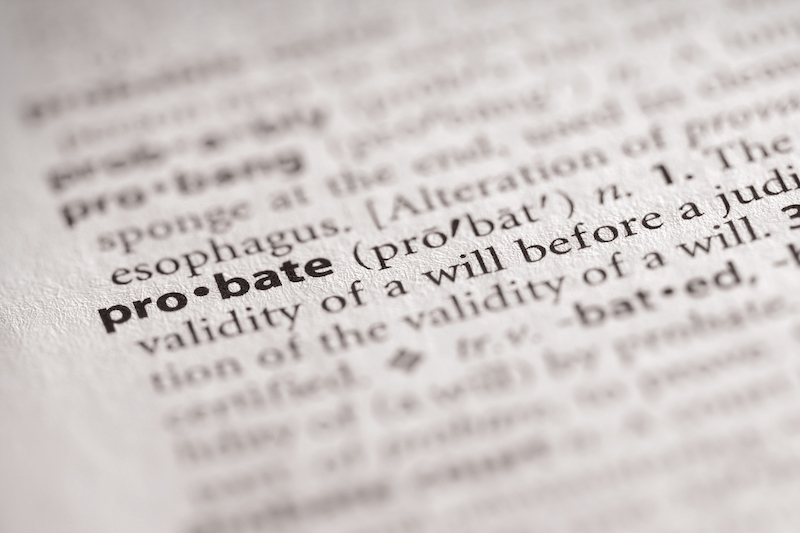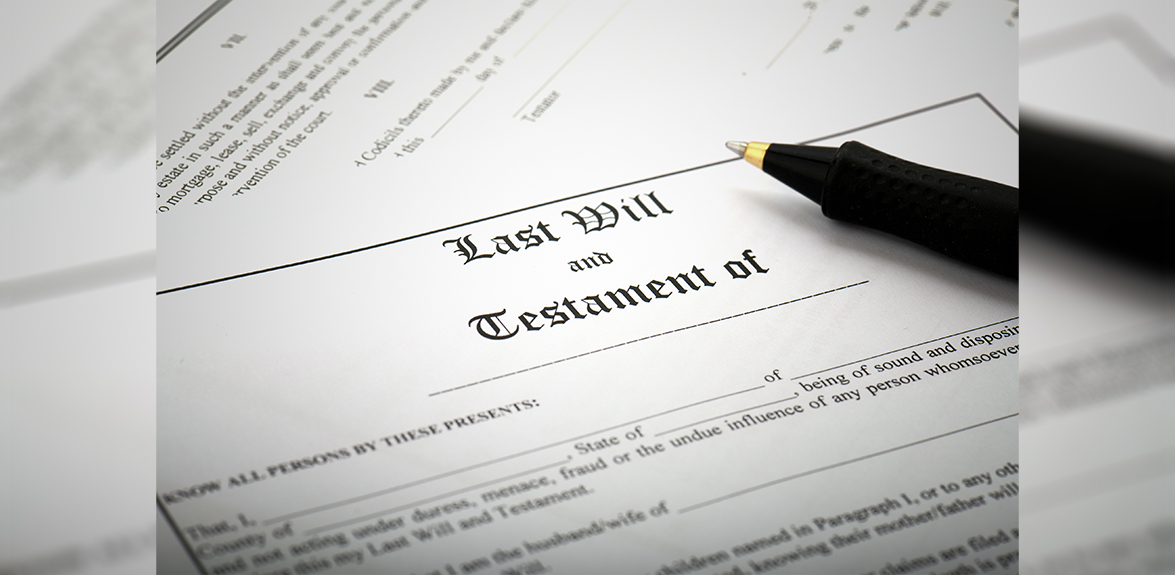 This is an actual life insurance claim – names have been changed to protect the privacy of the individuals involved.
This is an actual life insurance claim – names have been changed to protect the privacy of the individuals involved.
“Ron,” a retired Canadian Armed Forces (CAF) member, died at age 66. He was receiving a CAF pension and had had a $150,000 life insurance policy in place since 1992. The named beneficiary on his life insurance policy was: “Estate.” For his will, Ron had named his brother, “Charles,” as executor. The will gave small entitlements to grandchildren from a previous marriage, and the remainder to Ron’s current common-law spouse, “Donna.” In cases where the “Estate” is named as beneficiary for life insurance, and with proceeds over $50,000, the insurance company requires probate documents in order to process the claim. Charles was given the proper insurance claim forms to complete.

What is Probate?
Probate is a process that validates the will and may require a lawyer for assistance, but you can also go to the courthouse and file the documents yourself. Charles kept putting it off, not really wanting to deal with it, despite my repeated calls to inquire on how this was progressing. He had, however, paid for the funeral as well as to have the deceased’s tax returns filed for several outstanding years.
The common-law spouse, Donna, who was now receiving half of Ron’s military monthly pension and had already received the CAF Supplementary Death Benefit (SDB), contacted me, as the insurance representative for his SISIP life insurance. As she was neither the beneficiary nor the executrix, I could only advise her to contact the executor. However, since the latter seemed unwilling to act, I further advised her to speak to her lawyer about the possibility of being named executrix or administrator herself.
In March 2013 (one year after death), Charles finally took the will to a lawyer to get help with the probate.
The lawyer was unsure whether the will was valid; there were issues (pages in different fonts, not initialed, etc.) consistent with a “do-it-yourself” will, and no legal representation had been used. This went for a judge’s ruling and request for an original will was made to all family members. Ultimately, since all had copies of the same will, it was deemed in court to be a valid will. This again took several months.

More Information Needed
Donna, in the meantime, had applied to become administrator of the estate which was granted in April 2014, over two years after Ron’s passing! She then applied for and received probate documents, which were forwarded to the Insurer. I was now able to provide the required claim forms for Donna to complete, which included the Attending Physician Statement regarding death. At this stage, the attending physician noted several antecedents and significant causes related to death, but could not comment on the underlying conditions as he did not know Ron until just before death occurred. The medical record had been archived, so this report took time to retrieve.
The insurance company now required more information on the other medical conditions (dates of diagnoses, etc.); the spouse had to go back to Ron’s family doctor– again, the records were archived, being over two years since the death. I sent the request myself to his doctor, as I had to explain that this was an additional APS. Finally, the family doctor sent back copies of various medical specialists’ reports, forms, etc., through the years.

Two and Half Years Later
Meanwhile, Donna was becoming increasingly impatient, going so far as to contact the Veteran’s Affairs Ombudsman to complain about how long this claim was taking. Without disclosing personal information, I made him aware of the situation, and the two of us agreed that this was not a Veteran’s Affairs issue, and he closed his file.
Finally, two and a half years after Ron’s death, the insurer was able to approve the claim. The spouse/estate administrator received the funds payable to the “Estate” of the deceased (claim + plus interest paid from the time of death, to the date the cheque was issued). She did not realize however that this cheque was to be returned to the estate, in order to pay any outstanding debts, taxes owing, lawyer fees, etc. Only once all creditors were paid could she and other heirs consider the remaining funds as theirs.

Plan Properly
So, to answer the question… Should you name “Estate” as the beneficiary of your life insurance? As seen in this case, it can actually further delay the process, compounded with naming an executor who is unwilling or unable to act. A better solution would have been for the life insurance to name the spouse as beneficiary in a high percentage (estate being named in a smaller percentage, to deal with the grandchildren’s bequests) or, the grandchildren could have been named outright, as primaries for their smaller percentage.
This is a reminder to all of us, civilians and CAF members alike, that drawing up a will is a serious matter, not to be contemplated lightly, or without professional advice from the start!Note that Probate costs vary widely depending on the province (maximum in this case was $400).
This article is for general information purposes only. Provided by SISIP.










